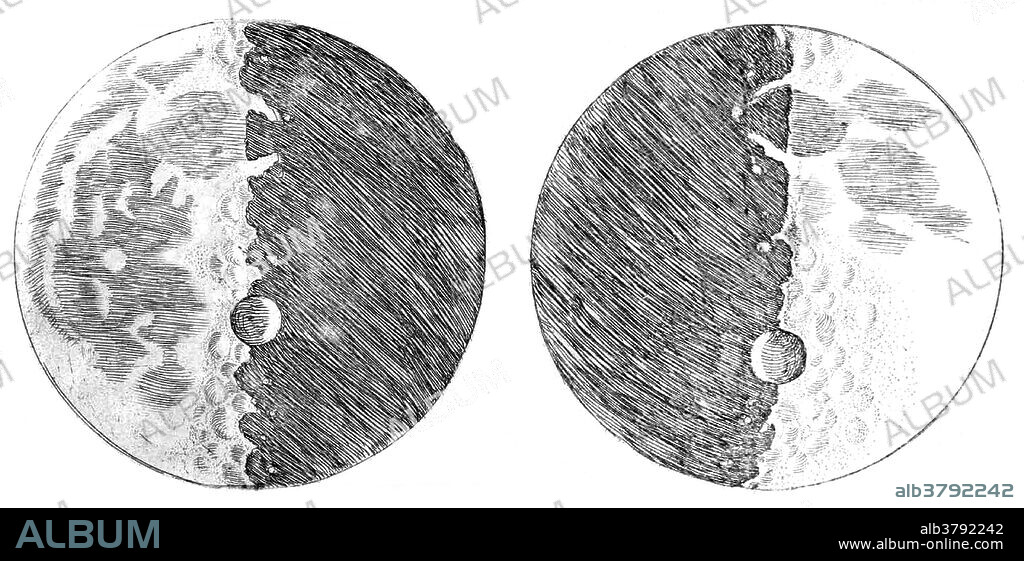alb3792242
Galileo Galilei, Moon Maps, 1610

|
Ajouter à une autre Lightbox |
|
Ajouter à une autre Lightbox |



Avez-vous déjà un compte? S'identifier
Vous n'avez pas de compte ? S'inscrire
Acheter cette image

Titre:
Galileo Galilei, Moon Maps, 1610
Légende:
Voir la traduction automatique
Moon drawings from Siderius Nuncivs by Galileo Galilei, 1610. By Galileo's time the Moon was believed to be perfectly smooth and incorruptible, like the Sun. In November 1609 Galileo pointed his telescope to the Moon for the first time. From November 30 until December 18, he examined and drew the moon. The first description of Lunar craters were described in his book Sidereus Nuncius. He differentiated great and ancient spots (macula magna antiqua) from small spots (macula minor). Galileo Galilei (1564-1642) was an Italian physicist, mathematician, astronomer, and philosopher who played a major role in the Scientific Revolution. His achievements include improvements to the telescope, important astronomical observations and support for Copernicanism. Galileo has been called the "father of modern observational astronomy", the "father of modern physics", the "father of science", and "the father of modern science".
Crédit:
Album / Science Source
Autorisations:
Modèle: Non - Propriété: Non
Questions sur les droits?
Questions sur les droits?
Taille de l'image:
4800 x 2381 px | 32.7 MB
Taille d'impression:
40.6 x 20.2 cm | 16.0 x 7.9 in (300 dpi)
Mots clés:
 Pinterest
Pinterest Twitter
Twitter Facebook
Facebook Copier le lien
Copier le lien Email
Email
